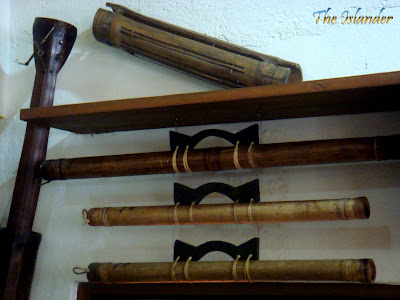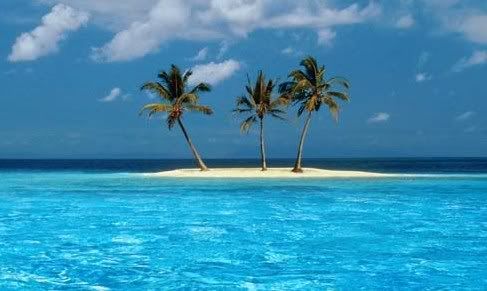Posting new entries these days is as hard as making out-of-town travels. Aside from the bad transition of becoming a hardworker from what must be a smart worker, I’m drowned to exploring opportunities of being a better individual. So more or less I can be seen doing worthy undertakings with my high school and college alma mater, to which i renewed stronger ties, other than in tourist places that I used to post here.
But I dont give up my passion to search the world. It still remained on top of my life-fulfilling wishlists.
So much for the acrobatic intro, since I haven’t gone for places far off Surigao, I decided to feature the local tourist points of my city once again. Aside from the fact that I haven't been to anywhere outside the town, our province is just rich with unlimited natural resources and wonders that I have not yet discovered. So posting local places is of endless possibility.
TheHeritage Center is not hard to find. Visitors can either make the Hotel Tavern Surigao or the Philippine Ports Authority, both located in the city boulevard, as reference points because it is somewhere in between. I must say it is strategically located because it is facing right at the Surigao Strait
For example, this wooden panning plates would remind you that before Taganito Mining Company and other big mining companies in the province exist, the lumads (native locals) were already on that industry.
Another mining memorabilia that can be seen in the center are old photos showing the chromite rush in Dinagat Islands (now a separate province).
Other collections that are worth the visit are the following:
They also have collections of tools and equipments depicting the old way of living of the early settlers called Mamanwa. Here are some:
The Surigaonon Heritage Center also houses various wares dating back to old Chinese trades.
Other than the vintage memorabilias, the following are also features of the center:
As of now, the center is privately owned and managed by Surigao’s great historian, Fernando Almeda, along with the fellow historian curator/painter, Manuel Mendros. The center is open during weekdays.
But I dont give up my passion to search the world. It still remained on top of my life-fulfilling wishlists.
So much for the acrobatic intro, since I haven’t gone for places far off Surigao, I decided to feature the local tourist points of my city once again. Aside from the fact that I haven't been to anywhere outside the town, our province is just rich with unlimited natural resources and wonders that I have not yet discovered. So posting local places is of endless possibility.
The
For example, this wooden panning plates would remind you that before Taganito Mining Company and other big mining companies in the province exist, the lumads (native locals) were already on that industry.
 |
| Wooden plates for gold panning |
 |
| Chromite Rush in Dinagat Islands |
 |
| A relic of the old belfry of the Surigao Cathedral |
 |
| Relic of the old coffins of Mamanwas |
 |
| Old sugarcane crusher |
 |
| "Badjo", in tagalog "bayo". A traditional tool used to extract the rice from its husks. |
 |
| I dont exactly know what are these but basing on how it looks, it might be a musical instrument. You can help me identify it, please leave a comment if you know so. Thank you. |
 |
| Musical instruments. |
 |
| Old porcelains. |
 |
| Japanese bayonets, vintage bombs, and soldier's water container during the World War II. |
 |
| Collection of different kinds of rocks that can be found in the province. Surigao is rich in minerals. |
 |
| Portraits of the Former Governors of the Province of Surigao del Norte courtesy of local artist, Manuel Mendros. Surigaonons are inborn leaders. |
 |
| One of the masterpieces of Ms. Ann Tiukinhoy-Pamintuan, a renowned contemporary designer who is of Surigaonon descent. |
 |
| Mr. Almeda storytelling with the rare visitor, His Excellency Peter Beckingham, British Ambassador to the Philippines. |

